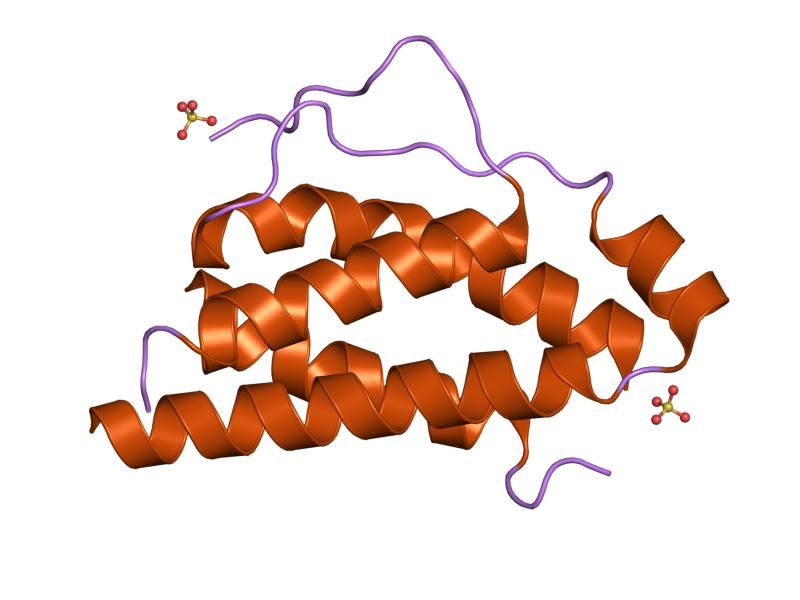
A visualization of the IL-2 structure. Credit: Jawahar Swaminathan and MSD staff at the European Bioinformatics Institute
The most amazing machines in the world live in our bodies and they are called proteins. Proteins are responsible for many important functions in our bodies including food digestion, immune system defense, and muscle contraction. Almost everything that happens in biology, it does because of proteins.
Proteins are molecules composed of amino acids. In nature, there are 20 types of amino acids which are combined to give rise to a protein. Each of the 20 amino acids is chemically different from each other.
Let’s do a simple calculation: considering that we have 20 different types of amino acids and each one can occupy any position in a protein composed of n amino acids, then it is possible to give rise to 20 x 20…x n different possible proteins, which can also be represented as 20n. For example, if a protein is composed of five types of amino acids, it is possible to generate 20 x 20 x 20 x 20 x 20 = 3,2000,000 different combinations of five types of amino acids, or 3,2000,000 different proteins. That number is much more than the total number of proteins that we have in nature!
Scientists are now designing tens of thousands of new proteins on the computer and encoding each one of those in a synthetic gene. This technology has shown great potential to solve health problems such as cancer and infectious diseases. But how is this going to be working?
A group of researchers from The Institute for Protein Design https://www.ipd.uw.edu/at the University of Washington is redesigning an immune protein called interleukin-2 (IL-2), which has been used to treat aggressive types of cancers. They are using computer modeling to design a new IL-2 from scratch with the same immune boosting functions but without its dangerous side effects. The new version of IL-2 shares only 14% of its original amino acid sequence. Lab tests in mouse models of melanoma and colon cancer revealed that the new IL-2 has superior therapeutic activity and reduced toxicity compared to the natural IL-2.
The same group is also working on developing a universal flu vaccine that would be effective no matter the virus mutation, which means that once we are immunized with the new vaccine, we won’t have to be vaccinated every year. They are using the protein design methodology developed in their lab to create a universal vaccine. But what does a flu vaccine need to be universal? The flu virus is covered by proteins called hemagglutinin, which have a “head” and a “stem” part. The head part changes every year, while the stem part remains consistent year after year. For this reason, for a universal protection, the new vaccine will have to promote immune response towards conserved regions of the flu virus, i.e. the stem. So far, the new universal vaccine has been tested with animal models and showed protection against not only the specific flu strains used to develop the vaccine, but also against other strains in the flu family tree, which means a universal immune protection.
Indeed, computation protein design has shown to be a promising tool to solve health problems of the 21st century. This groundbreaking technology can improve not only flu vaccines, but also shed light on developing other vaccines such as HIV, malaria, and hepatitis C. Furthermore, this technology can also facilitate the development of more effective and safer cancer immunotherapies, by designing more specific proteins to boost the immune system without side effects.
References:
Silva et al. De novo design of potent and selective mimics of IL-2 and IL-15. Nature, 2019.
Kanekiyo et al. New Vaccine Design and Delivery Technologies. The Journal of Infectious Diseases, 2019.
Alyne G. Teixeira
Alyne is a PhD Student in Biomedical Engineering and works in the Lab for Tissue Engineering and Microscale Biotechnology at Dalhousie University.
